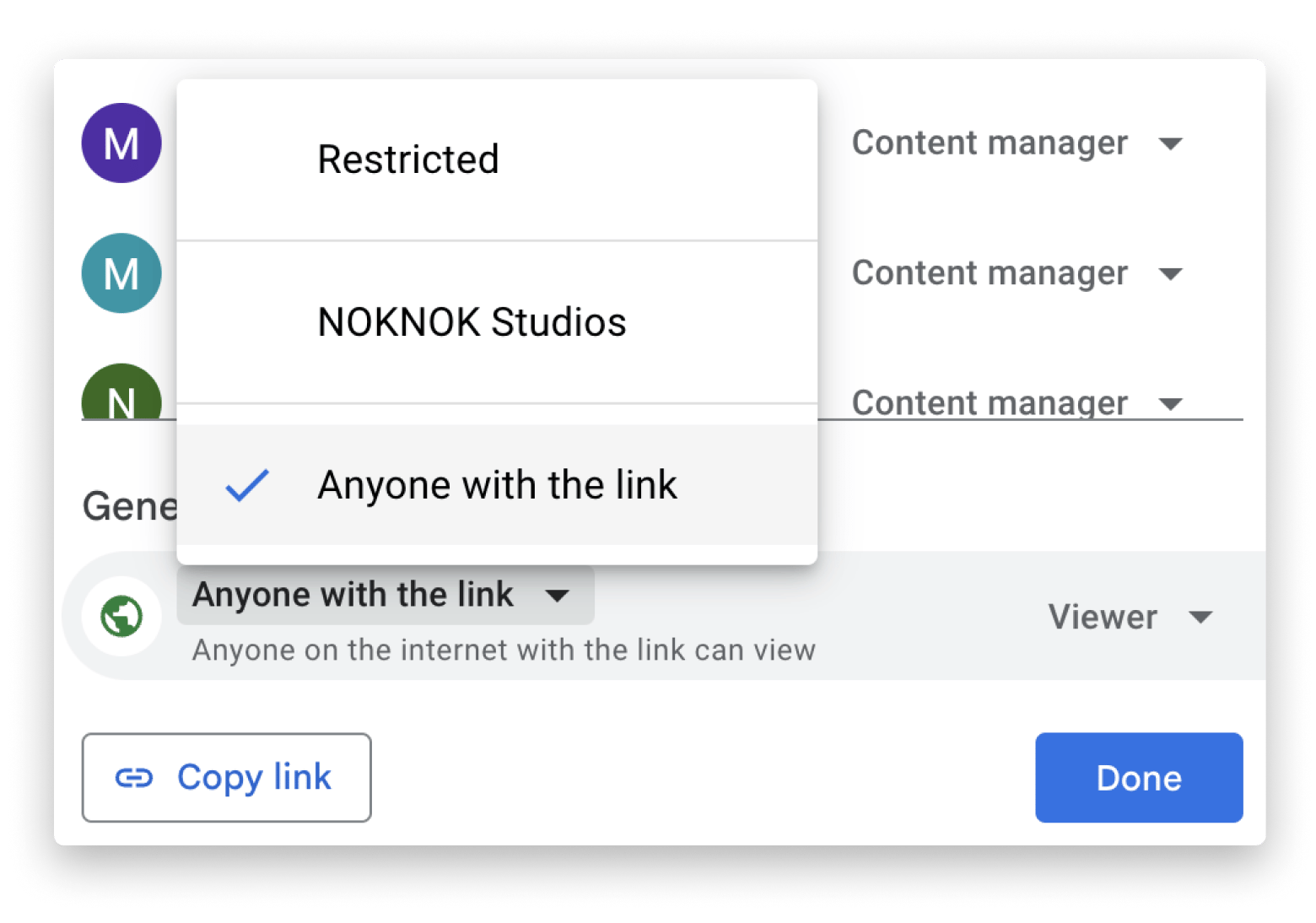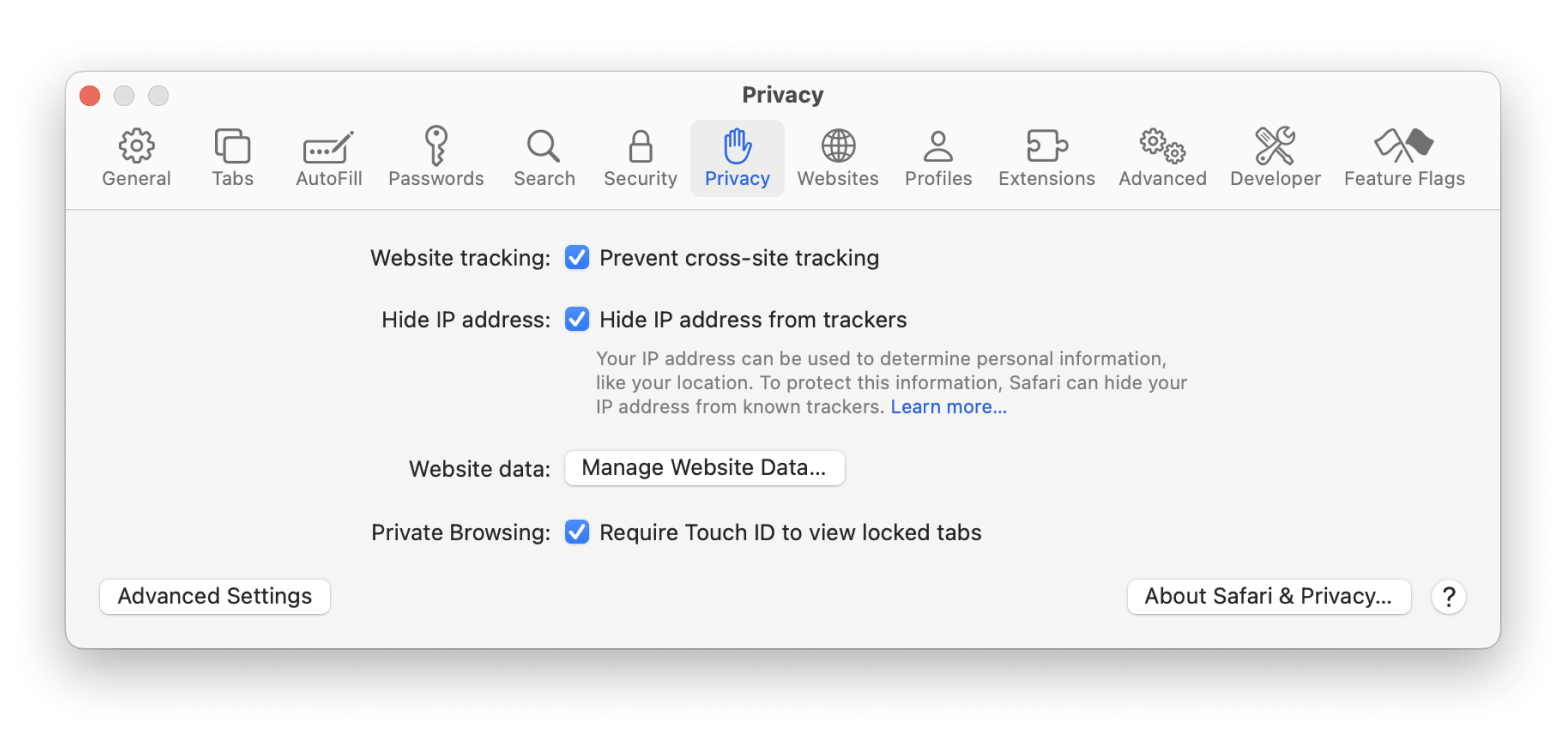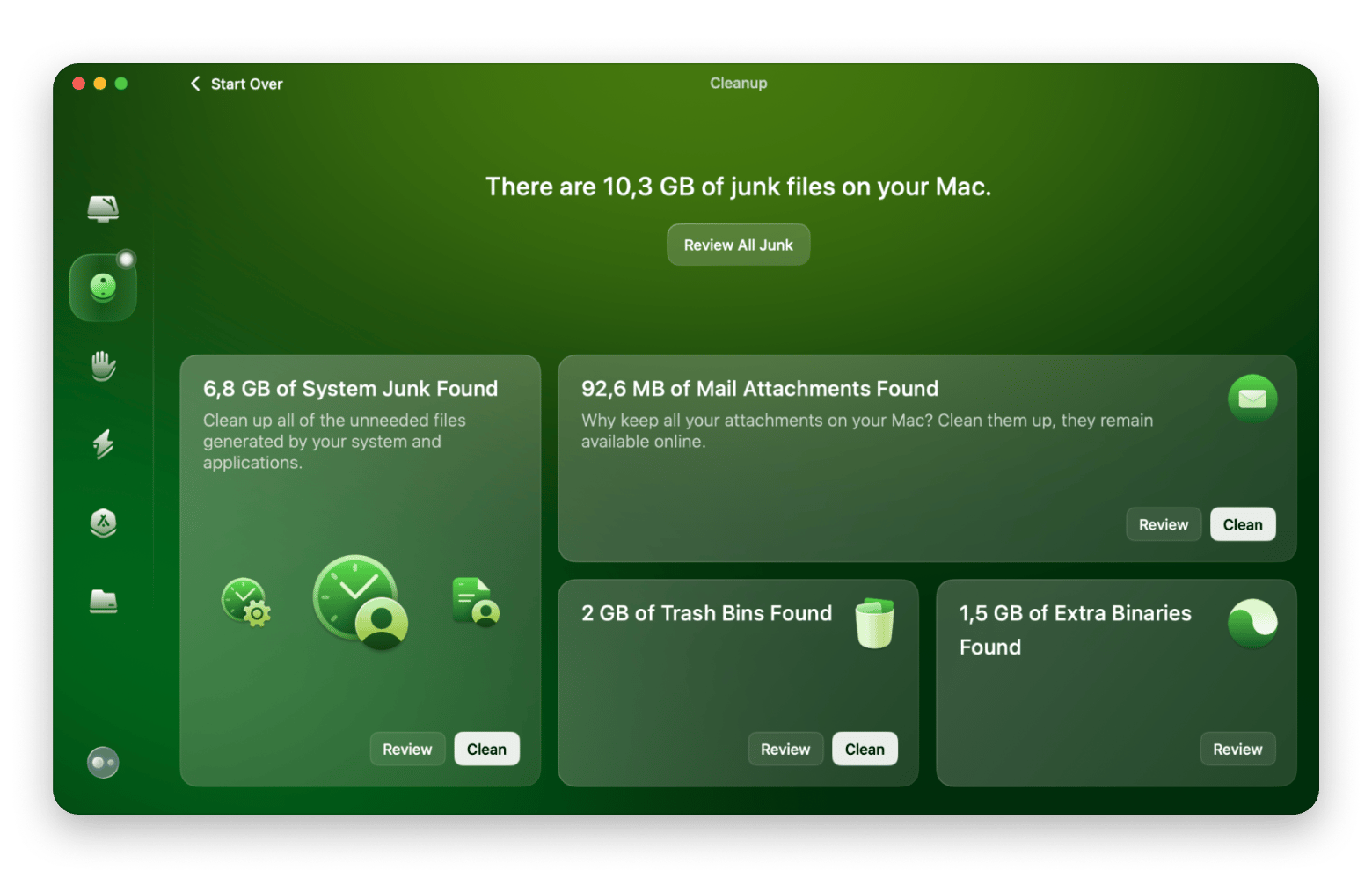What to do when you can’t download from Google Drive? Here’s the fix no one tells you about
- Try multiple download methods.
Right-click the file, use the top menu, or download from preview mode to bypass temporary glitches in Google Drive. - Check permissions and accounts.
HTTP 403 errors often occur when your account lacks access. Log out of all Google accounts and log in with the correct one, or request access from the file owner. - Clear browser issues.
Cache, cookies, and ad blockers can block downloads. Clear browser data manually or use CleanMyMac to quickly fix these issues. - Handle large files and limits.
For files too big to scan or downloads limited by Google, click "Download anyway," make a copy, or use Google Takeout for bulk downloads. - Use Mac-friendly tools for smoother access.
Mount Google Drive as a local folder via Google Drive for Desktop or CloudMounter to bypass browser quirks and download files like local data. CleanMyMac, NetSpot, and CloudMounter are available on Setapp for easier troubleshooting. Try Setapp free for 7 days.
I've used Google Drive for years because it's a great tool. But every now and then, Google Drive not downloading as it should. Instead of getting my file, I get hit with an error like “HTTP 403," which is as annoying as it sounds.
If you’ve run into the same problem, don’t worry. I'll walk you through what to do when you can’t download from Google Drive.
But first, here’s a quick overview of common issues, like when you couldn't preview a file in Google Drive and what you can do to fix them:
I can’t download from Google Drive | Do this |
Download button not working | Try different methods: right-click, top menu, or open file and use File > Download. |
File permission error (403) | Log out of all Google accounts and log back in with the correct one. |
Can't download due to account or permission issues | Open the file link in a private or incognito browser window. |
Browser issues | Clear cache and cookies manually, or use CleanMyMac to do it quickly. |
Ad blocker interference | Temporarily disable ad blockers and reload the page. |
Unstable internet connection | Restart your router or check signal strength with NetSpot. |
Large file won’t download | Click Download anyway when warned it can’t be virus-scanned. |
Download limit reached | Make a copy of the file in your Drive and download that version instead. |
Browser still not working | Mount Google Drive as a local folder using CloudMounter. |
Google Drive not downloading all files? Check out this GPT assistant. Just explain what's going on, and it’ll help you sort out why the file could not be downloaded from Google Drive.
Try these different ways to download files from Google Drive
Google Drive gives you several methods for downloading any file. So while there might be a glitch with one of them, others might work as usual.
- Use the editor menu (for Google Docs): Open the file, click File > Download, then choose your format (like .docx or .pdf).
- Right-click the file: For most files, just right-click in Google Drive and select Download.
- Use the top bar menu: Select a file, click the three-dot icon in the top bar, then choose Download.
- Download from preview mode: Double-click photos or PDFs, or preview any file. Then click the download icon at the top.
- When downloading multiple files: Google Drive creates a zip file. If the Google Drive zip failed, close the Drive tab (you’ll get a “files not saved” warning), click Leave, and the download should start properly.
Pro move: For high-throughput downloads, especially for large folders or frequent syncs — Google Drive for desktop (the successor to Backup and Sync) is your best bet. It mounts your Drive as a native Finder volume on macOS, bypassing browser quirks entirely. Just install it, sign in, and drag files like they’re local. Works identically on Windows.
If nothing works, then try some of the methods below.
Use a single Google account to log in
If you’re using multiple Google accounts (e.g., for work and personal), Google Drive might improperly mix up permissions to download certain files.
To fix this, log out of all Google accounts. Then, log back in using only the account that has access to the file, and try downloading it again.
Check Google Workspace or Shared Drive restrictions
Files stored in Google Workspace Shared Drives or managed domains may include admin-enforced download/print/copy restrictions, even for editors. This is a compliance feature rather than a bug.
Common restrictions are:
- Viewers cannot download, print, or copy
- External users blocked from downloading
- Download disabled for sensitive content
If you are not the file owner (or do not have the required role + unrestricted permissions), you’ll need to request permission from the owner or an admin. There is no client-side workaround. As an admin, go to Admin Console > Apps > Google Workspace > Drive & Docs > Sharing settings to audit or relax these controls. Be aware that Google’s permission propagation rules changed as of Sept 2025, so folder-level settings may increasingly override individual file settings.
Download a file in private browsing mode
You can also download any Google Drive file without being logged into a Google account.
To do so, start by creating a shareable Google Drive link:
- Select the file in Google Drive.
- Click the share icon.
- Change the link settings to Anyone with the link and set the role to Viewer, Commenter, or Editor, depending on what’s needed.
- Copy the link.
- Open a private or incognito browser window, paste the link, and access the file.

This method allows anyone with the link to view (and download) the file without logging in, as long as permissions are set correctly. Just make sure you’re okay with the file being accessible to anyone who has the link.
Read also:
- Work on Google Docs Offline Using Mac
- Fix Youtube Black Screen
- Mac Tips and Tricks
- Use Google Drive on Mac Like A Pro
Clear browser cookies and cache
A lot of the time, if Google Drive won’t let you download something, it’s because your browser has some weird stuff saved in its cache or cookies. Clearing them out usually does the trick.
When it comes to getting rid of cookies and cache, every browser is different.
- Safari: Go to Settings (Command + ,) > Privacy > Manage Website Data > Remove All.

- Google Chrome: Go to Chrome > Settings > Privacy and security > Delete browsing data > Delete Data.

The tricky part is that every browser handles cache and cookies a bit differently, so clearing everything manually can be a hassle. If you want an easier way to take full control over your browser data, a tool like CleanMyMac can really help.
CleanMyMac is an easy-to-use app that lets you manage just about every part of your Mac. You can clean up old files, remove mail attachments, free up memory, reindex Spotlight, completely uninstall apps, and clear out browser data with just a few clicks.

Disable ad blockers
With ad blockers becoming more popular over the past few years, some web apps have started to break in unexpected ways.
If you’re using an ad-blocking extension (or an ad blocker app for Safari), try turning it off, reloading your browser, and then downloading from Google Drive again.
Check out the list of top ad blocker apps for Mac.
Improve your network connection
After you make sure that the “Google Drive won’t let me download” problem is not with Google Drive itself or your browser, the next thing you should check is your network connection.
If your Wi-Fi connection is poor or unstable, Google Drive might throw all kinds of downloading errors. The best way to troubleshoot your internet connection is to use an app like NetSpot.
NetSpot can analyze your wireless network in seconds without all the technical complexities. You can get information on signal strength and noise levels, test your speed, and even create a heatmap to see how the Wi-Fi signal is spreading across your space.

Read also:
Google Drive download errors and their fixes
You might encounter a few different errors when trying to download files from Google Drive. This can be frustrating, especially when you need the file right away, but the good news is that most of these issues have simple fixes.
In the next section, I’ll walk you through the most common errors and how to solve them step by step.
HTTP 403 — Forbidden
HTTP 403 – Forbidden error means you don’t have permission to access Google Drive. This could be due to incorrect file permissions or server configuration problems:
- Request access: If Google Drive shows you a message that says, "You need permission", click Request Access. The file owner will get a notification to approve your access. Once it’s approved, you can open or download it.
- Clear browser cache: Sometimes, cache and cookies can stop you from downloading a Google Drive file.
- Temporarily disable VPN: Using a VPN can trigger a 403 error on your Google Drive. It means you can’t access the Drive from VPN servers due to some security restrictions. To solve this, disconnect your VPN and retry accessing the Google Drive file or folder.
HTTP 404 — Not Found
The HTTP 404 error on Google Drive typically occurs when a file or folder has been deleted or moved, or the link is incorrect. Here's how to fix it:
- Reload the page: One of the most common reasons for Error 404 is an issue with loading the page. Try reloading the link by clicking on the Refresh button in your browser.
- Check the URL: Another common cause is a wrong URL. So, check if you have entered the wrong link and retry.
- Clear browser data or cookies: To clear browser data or cookies, use the same steps we mentioned in the above (HTTP 403) section.
- Network failure: A weak internet connection or poor network issues are often the cause of download problems with Google Drive. You can easily check the status of your network connection, such as Ethernet or Wi-Fi, using Network settings on Mac. Go to System Settings > Network > Wi-Fi. Now, you can see your network connection status. If it's weak, then try reconnecting again or call your service provider for help.
If your Mac is successfully connected to Wi-Fi but you still can’t download Google Drive, restart your router. Unplug it for 10-20 seconds and then plug it back in. Once the internet connects, refresh the Google Drive link on your browser.
Download limit reached
This error occurs when a Google Drive file is downloaded too many times by different users. To prevent server overload or potential abuse, Google temporarily disables the download option for that file.
You can fix the issue by making a copy of the file. Here's how:
- Open the Google file.
- Click File > Make a copy.
- Click Make a copy.
Now, just open the copy and try to download it.
If the file isn’t urgent, it’s a good idea to wait a day and try downloading it again after 24 hours. The restriction usually resets on its own within that time.
Alternative methods to download files from Google Drive
If you’ve tried all the usual fixes but still can’t download your file, don’t worry; there are a few other methods worth trying. Here are some alternative ways to get your files from Google Drive.
Use Google Takeout
When Google Drive is large and fails to download, try Google Takeout. It allows you to download multiple files or your entire Google Drive in one go.
Here's how:
- Go to Google Takeout > Google Drive.
- Choose the files/folders to download.
- Click Next Step.
- In Destination, select the file type.
- Click Create Export.
You'll get a new folder as a zip file saved at your selected place.

Try a different browser
It’s possible that your current browser extensions or settings are blocking the download. Switching to a different browser or using Incognito Mode might help. Here’s how to do it:
- Open an Incognito/Private Window in your browser.
- Log in to your Google Drive account.
- Navigate to the file and try downloading it.
Alternatively, try using a different browser, such as Chrome, Firefox, etc.
Mount your drive locally on Mac
Another Mac-centric solution for when you cannot download Google Docs is to bypass the browser altogether and download Backup and Sync from Google, which turns your Google Drive into a folder on your Mac, from which you can copy files just as you would with any local folder.
If you don’t want to take up all your Mac’s storage space with Google Drive, there's one more option you can use.
CloudMounter is a unique tool that lets you mount any cloud storage locally on your Mac, but as an external drive, meaning it would take up no local storage space (just like an external physical hard drive). CloudMounter supports Google Drive, Dropbox, OneDrive, Amazon S3, Backblaze, and nearly any storage solution you can think of!

Why won’t Google Drive let me download files?
While Google Drive errors like denied access or failed downloads don’t happen often, they definitely can confuse you when they happen.
There are generally three causes for Google Drive errors: your user account, your browser, or your Mac (or even a combination of all three).
Here’s what’s actually breaking your downloads today:
Google Workspace admin restrictions: Your organization’s admin might have disabled downloads globally or for specific file types. If you’re on a corporate or educational account, this is often the silent culprit.
Security scanning delays: Google defers virus scanning for large files (>25 MB). If the file hasn’t been scanned yet — or can’t be — you’ll hit a wall unless you explicitly click Download anyway.
Regional compliance blocks: Google enforces geo-based restrictions in certain countries due to local data laws. If you're in a sanctioned region or using a flagged IP (e.g., via certain VPNs), Google Drive can't download files — even for your own them.
Final thoughts on what to do when you can’t download from Google Drive
If your Google Drive not loading, don’t panic; it happens more often than you’d think. I covered a bunch of fixes, from switching browsers and clearing cache to adjusting sharing settings and checking for download limits.
I also mentioned a few handy tools that can make troubleshooting a whole lot easier. CleanMyMac helps you clear browser data and free up system resources, NetSpot checks your Wi-Fi strength to rule out connection issues, and CloudMounter lets you access Google Drive like a local folder, without taking up space.
The best part? All of these apps are available on Setapp, a subscription service with over 260 Mac and iOS apps you can try free for 7 days. If you’re a Mac user, it’s definitely worth exploring.
FAQ
How to download a Google Drive file that can't be virus-scanned?
To download a Google Drive file that can't be virus scanned, simply open the file and look for the warning message that says, “This file is too large to scan for viruses.” When you see it, just click Download anyway. The file will download as usual despite the warning.
How to download from Google Drive if there is no download option?
If there’s no download option on Google Drive, you can try these methods:
- Make a copy: Right-click the file (or click the three dots) and select Make a copy. Then, download the copy.
- Try Google Drive app: If you're using the mobile app, you can save the file for offline use.
- Request access from the file owner.
Why does Google Drive have a download limit?
Google Drive is a cloud storage service, and when many users download a file too many times, it can create heavy traffic, which can overwhelm the Google servers. So, to protect their servers, Google Drive has a download limit.
How to fix “could not download HTTP” error?
To fix the could not download HTTP error, try clearing browsing data, cache, and cookies with the steps mentioned above. Also, check for access permissions to open the Google Drive file, and if access is restricted, request it from the owner of the file.






